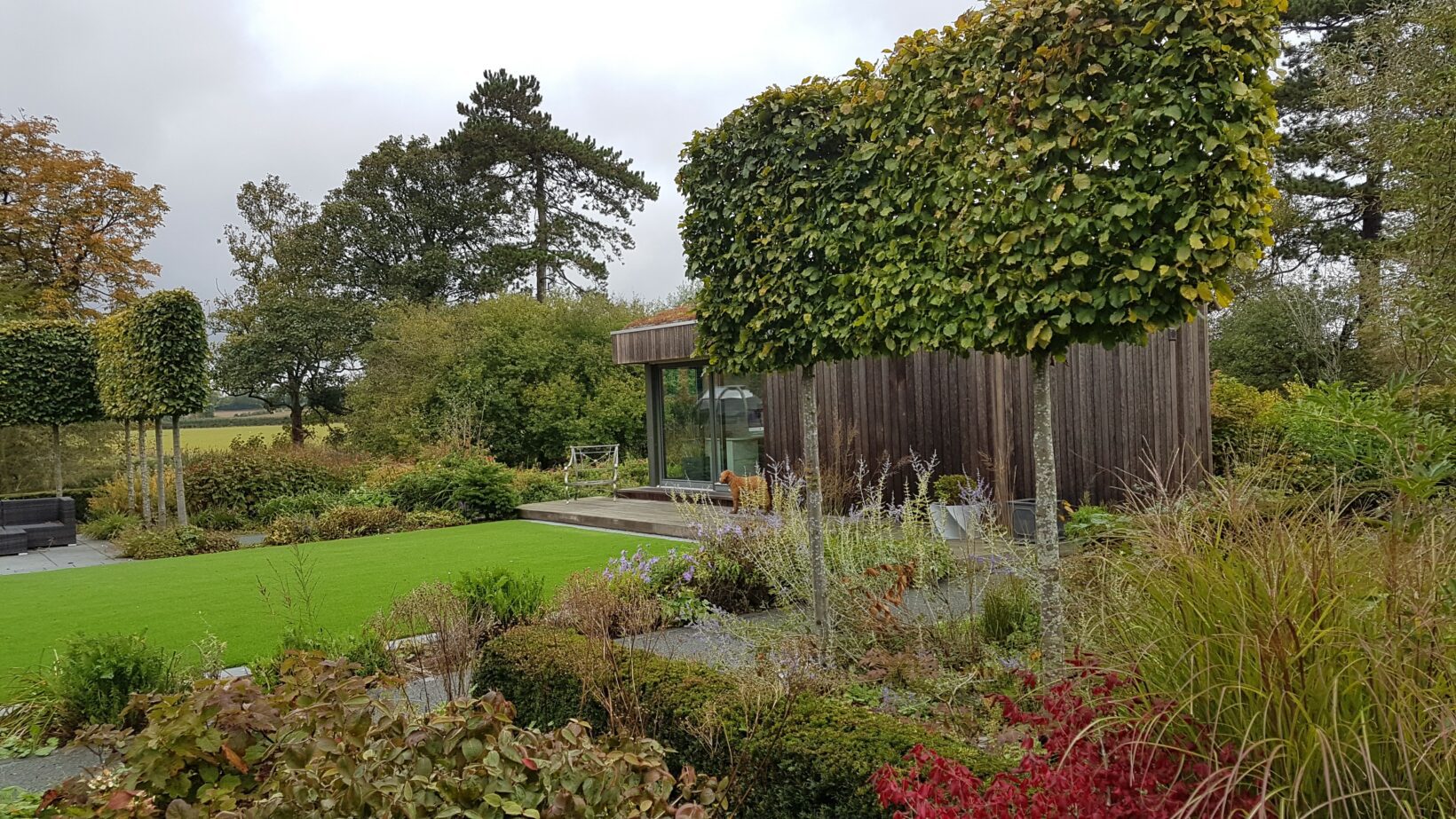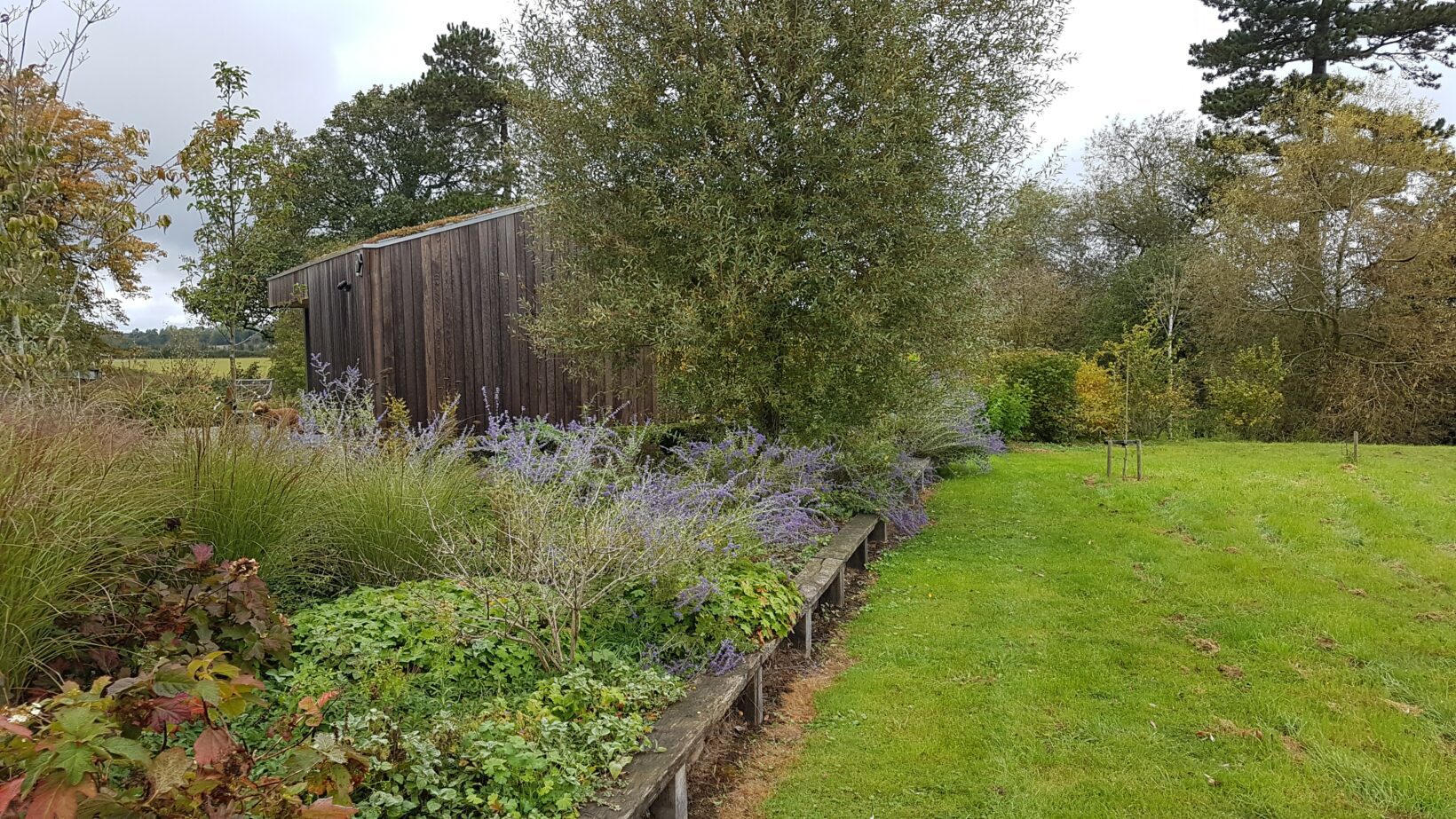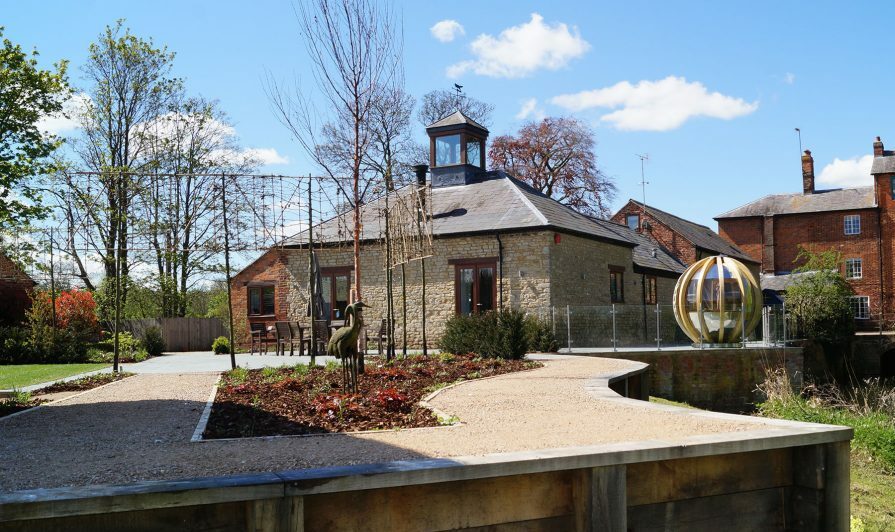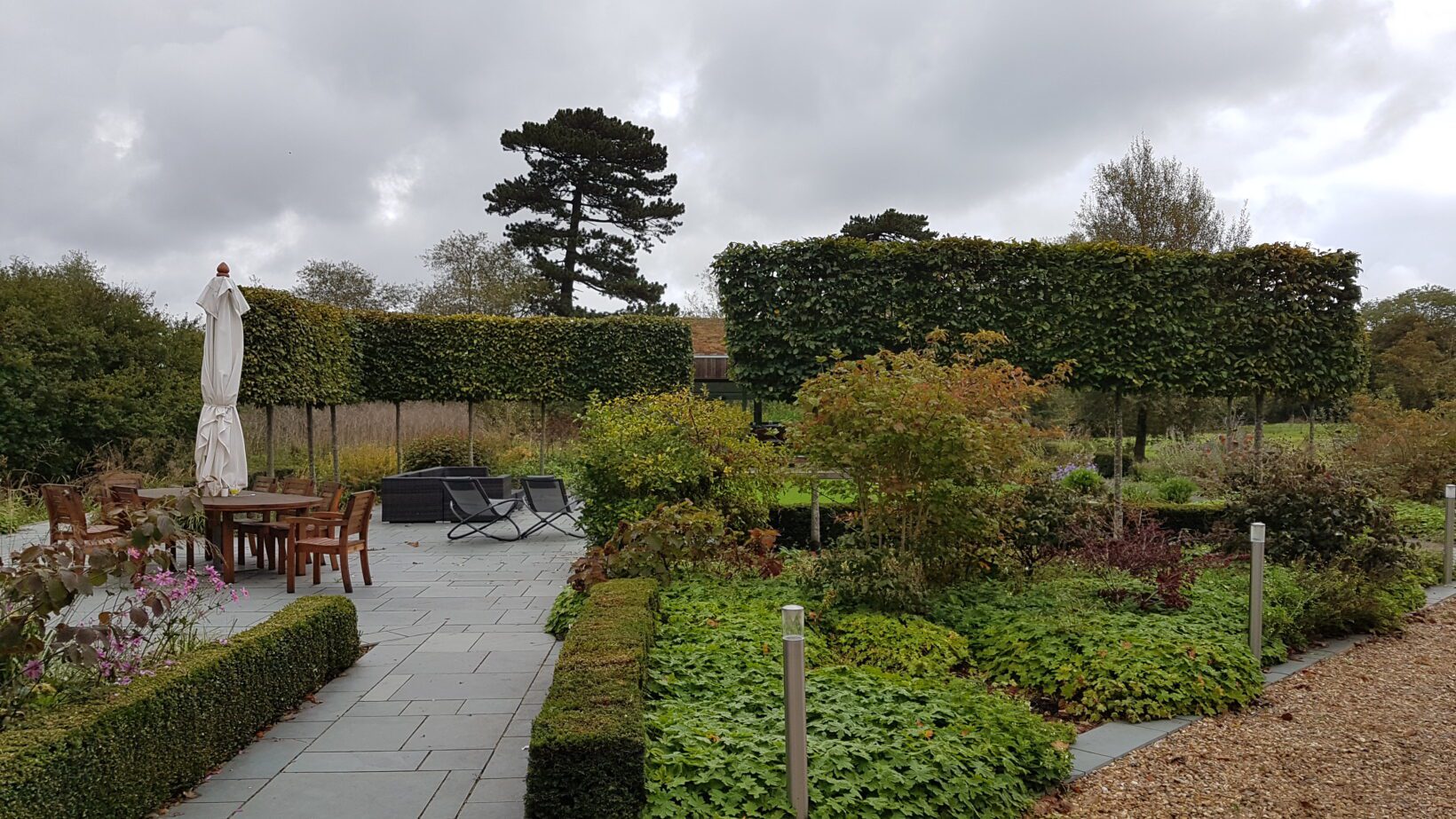

This beautiful old mill house, set adjacent to the River Great Ouse, had fantastic potential to be transformed into a beautiful and dynamic garden. The site consisted of a large lawn area and paddocks to the rear that had been used for grazing horses in the past. However, its situation next to the river meant that the grounds were prone to flooding and, with a changing climate, this would become an ever-increasing problem.


Our clients required not only a garden that would tolerate flooding but also be transformed into a functional space, for family life and entertaining friends. The mill house was set alongside a public bridleway and was often overlooked by passing hikers and walkers following the trail, so creating privacy was also important.


To negate the chances of flooding and to increase the level area near the house the design team proposed building a retaining wall to create a raised garden above the flood line. English oak timbers were used to retain the bank nearest the house and along the river to create this elevated space upon which a garden could be developed. The decision to raise the garden levels also helped change the line of sight from the public footpath and consequently improved the gardens privacy.


Apt created formal gardens adjacent to the house using evergreen hedging, clear stemmed pleached trees to provide additional privacy and beautiful swathes of perennial planting to soften the linear structure of the design. Natural slate paving was laid around the house to provide a level area for seating and to locate the client’s globe seating pod overlooking the river. A bespoke cedar clad garden office with a green sedum roof to attract wildlife was also proposed at the end of a formal lawn. From here views of the Great Ouse, mill house and gardens could be enjoyed whilst working.
In order to tackle the rest of the flood plane area that was boggy under foot for most of the year, we proposed a wild flower meadow with mown paths interplanted with Alder and Salix trees. Also an ‘island’ was created in the centre of the paddock with repeat perennial planting to act as a focal point looking from the mill house and a destination that could be reached by foot when dry or boat when flooded.